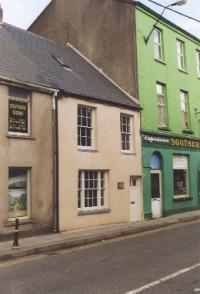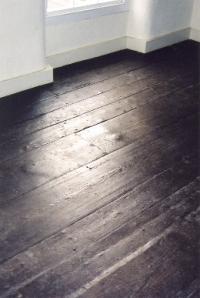84 Douglas Street, Cork
Published in 18th-19th Century Social Perspectives, 20th-century / Contemporary History, Early Modern History (1500–1700), Features, Issue 3 (May/June 2012), Volume 20
84 Douglas Street, Cork—an example of almost intact mid-eighteenth-century urban domestic architecture.
Number 84 Douglas Street is one of a pair of terraced houses in the South Parish of Cork, one of the city’s oldest suburbs. There are many historic buildings in the area, including Cork’s oldest standing structure, the fifteenth-century Red Abbey tower; the South Presentation Convent complex; eighteenth-century terraces along George’s Quay and White Street; and St Finbarr’s Church, Dunbar Street, the city’s oldest Catholic church. It was, however, a surprise to find in 2001 that a small-scale domestic house of similar age had survived. Moreover, it was the house in which the writer Frank O’Connor (1903–66; real name Michael O’Donovan) was born. His birth certificate records his birth at 84 Douglas Street, although the family was actually living in rented accommodation across the street. This house was owned by his uncle, a shoemaker.From the features remaining it is estimated that the house dates from the early to mid-eighteenth century; although smaller in scale, it is similar in age and architectural style to four houses on Fenn’s Quay. It is most unusual for a modest urban building to survive in such an unaltered state: not only was the house associated with O’Connor but it is of great interest as an example of almost intact mid-eighteenth-century urban domestic architecture. The house consists of two rooms on each floor, with a corner fireplace in each room. Original timber fire-surrounds have survived in both ground- and first-floor front rooms, as have tall panelled doors. The rear rooms have simple sheeted doors, identified as being contemporary with the likely building date. The original stairs have survived largely intact between ground and first floor, but owing to fire damage had largely been lost between first floor and attic. The floorboards are unusually wide, fourteen inches on average, and have survived on the first floor and to a certain extent in the attic. The stone flags of the rear ground floor have partially survived, as have sections of cornicing in the front ground-floor room.

Note the unusually wide floorboards. (NIAH)
In some initial work, the existing principal roof timbers were retained, new rafters were inserted and the house was re-slated using a natural stone slate; it was thus secured from further immediate deterioration. In spring 2003 the house was acquired by Cork City Council, to become a permanent home for the Munster Literature Centre. The objective was to complete the work in time for the celebration of the centenary of Frank O’Connor’s birth on 17 September 2003. Architect Paul Hudson and engineer Christopher Southgate oversaw the restoration.It was felt that the project could act as a model for carrying out small-scale projects in a reasonable time and at moderate cost. Furthermore, the whole South Parish, being located so close to the city centre and with its distinctive historic character, is an area undergoing much change and redevelopment. A high-quality refurbishment would demonstrate the nature and quality of the often-overlooked modest domestic buildings so typical of the South Parish and of the city generally. No elevational features survive from the original building date; the oldest external doors and windows in the area are early nineteenth-century in style, even where the buildings are clearly older. No photographs or drawings were found which might indicate the original form of the house front. Therefore it was decided to do a conjectural restoration based on surviving South Parish models for windows and the front door.Frank O’Connor House was officially opened by John O’Donoghue TD, Minister for Arts, Sport and Tourism, on 22 September 2003. It contains information not only on Frank O’Connor but also on other Munster writers, both contemporary and past. It provides an appropriate base for the activities of the Munster Literature Centre and can be visited during office hours. HI
Pat Ruane is Conservation Officer, Cork City Council. Series based on the National Inventory of Architectural Heritage’s ‘building of the month’, www.buildingsofireland.ie.
















